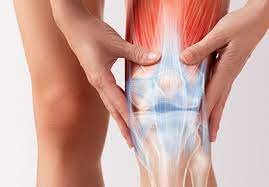What is an Orange Theory Workout?
If you’re trying to lose weight or want to build strength and endurance, an orange theory is for you. This approach will help you to hit the motivation you need for fitness.
Are you motivated by this competition? If so, Orangetheory might be the workout you’ve been searching for.
Maybe you’ve heard of the exercise chain, which straps on your hand to monitor heart rate and uses the approach to track heart rates for the members’ motivation and push themselves in the nearby gym. But for those who have never tried this class, the unique structure can be intimidating. So how exactly does it works? And gives the results that you have been looking for?
Could it help you lose weight?
The orange theory combines high-intensity interval training and traditional cardio to helpout members meet their orangetheory fitness goals such as weight loss, strength gain, or endurance. HIIT is a technique that alters between the shorter period of high-intensity exercise and periods of less intense activity than recovery. The trainer also suggests HIIT workouts over traditional steady cardio to lose weight. These HIIT concepts also help cardiovascular endurance by raising the heart rate; overall, it will help endure, power, and provide strength.
What are ‘zones’ in Orangetheory?
The Orangetheory spin on HIIT is called “zones” or “range Theory.” there are divided into five zones such as Zone1, Zone2, Zone3, Zone4, and Zone5. During your orange theory workout session, a digital board on the wall displays what zone you belong to and what zone you should strive for based on a personalized workout plan.
- Zone 3 is a period where your exercise starts challenging your body but does not make you overexert yourself.
- Zone 4 is a little tricky and makes your training seems a little uncomfortable.
- Zone 5 is the highest intensity band in which your exercise time is short.
The main objective is to spend 12 minutes in 1 hour with workouts in Zone 4 and Zone 5.
What is the Concept behind the zone bands?
The concept behind the zone system is that excess post-exercise oxygen consumption. What does that mean? When you’re working out and releasing the energy, especially in Zone4 and Zone 5, your body needs significantly more oxygen and time to recover. So much your body will continue to perish the calories up to one whole day after a workout and boost your metabolism.
Your zone will be based on the tracking system that you wear on your hand. There are a few more options as to what tracker you select. Generally, you wore either on hand or waist. These trackers will help you to track your phone & tv, and any device easily throughout the workout.
Conclusion:
Most people who attend orangetheory feel that the unique daily workout will help build companionship and community within their gym NYC. In addition, the motivation factor in sticking with it and having daily activities will allow the coach to focus on particular individual modifications and help to achieve another high.
- Share

YOU MIGHT ALSO ENJOY
What Kind of Doctor Treats Varicose Veins?
Stephen Romero - June 5, 2023
How To Prevent Knee Pain & Injuries?
Stephen Romero - June 3, 2023
What is Liposuction and the Risks Associated With It?
Stephen Romero - May 30, 2023
search
must read
The Ultimate Guide to Finding the Best Driving School Near Me in Springfield
Stephen Romero - March 7, 2025
recent post
ARCHIVES
- April 2025 (1)
- March 2025 (8)
- February 2025 (9)
- January 2025 (8)
- December 2024 (25)
- November 2024 (40)
- October 2024 (11)
- September 2024 (1)
- July 2024 (10)
- June 2024 (11)
- May 2024 (31)
- April 2024 (15)
- March 2024 (19)
- February 2024 (6)
- January 2024 (7)
- December 2023 (11)
- November 2023 (1)
- July 2023 (13)
- June 2023 (21)
- May 2023 (27)
- April 2023 (23)
- March 2023 (16)
- February 2023 (31)
- January 2023 (27)
- December 2022 (11)
- November 2022 (12)
- October 2022 (11)
- September 2022 (11)
- August 2022 (14)
- July 2022 (13)
- June 2022 (19)
- May 2022 (17)
- April 2022 (10)
- March 2022 (12)
- February 2022 (8)
- January 2022 (9)
- December 2021 (19)
- November 2021 (4)
- October 2021 (6)
- September 2021 (4)
- August 2021 (4)
- July 2021 (10)
- June 2021 (6)
- May 2021 (2)
- April 2021 (2)
- March 2021 (45)
- August 2020 (31)
- July 2020 (30)
- June 2020 (29)













